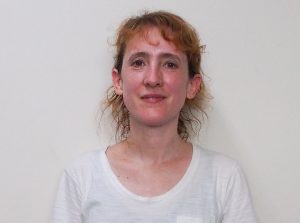滞在レポート:Dr. Marie D’angelo

Paris Institute for Nanosciences University Pierre and Marie Curie / National Center for Scientific Research
I had the oportunity to stay at the Institute for Solid State Physics as a visiting professor in the group of Professor Iwao Matsuda from May to August 2017.
I first met Professor Iwao Matsuda in Elettra, the Italian synchrotron, sixteen years ago. At that time I was a PhD student in Paris, working on silicon carbide surfaces using Photoelectron Spectroscopy and Scanning Tunneling Microscope. After that, I had several oportunities to meet Prof. Matsuda in Elettra. I really appreciated his way of working: very dynamical, rigourous, efficient and demanding also, but always the beamtimes were quite enjoyable with lot of fun and laughs.
Thus, at the end of my PhD I decided to join Professor Shuji Hasegawa’s group in which Professor Matsuda was working then. I spent two years in the University of Tokyo as a postdoctoral researcher and went back to France in 2005 when I got a position as Associate Professor in the Paris Institute of Nanosciences.
Since then, I have been collaborating with Professor Matsuda on different thematics of surface science and we already worked together on perovskite oxides, topological insulators or wide band gap semiconductors.
During my four-month stay at ISSP, I had the oportunity to use the Time-Resolved Photoemission facility of the BL07LSU beamline in SPring-8. This state-of-the-art setup combines ultra-short laser pulse, synchrotron radiation light and time-of-flight analyzer, allowing measurement of carriers dynamics in crystals as fast as the 50 ps range (the pulse-width of the synchrotron radiation). This time, we performed experiements on cubic silicon carbide 3C-SiC(001) surface and we could evidence an effect of surface reconstructions on the relaxation of the surface photovoltage. This first results of time-resolved photoemission on silicon carbide surfaces encourage us to go further and will lead to new experiments on BL07LSU in the coming years.
I would like to mention here that this study was part of the international collaboration work of Ms. Myriam Lachheb, a French M1 student from Pierre and Marie Curie University who spent three months in ISSP. For the last two years, Professor Matsuda has welcomed and trained three master students from my university. I am really greatfull to him and to ISSP to give such unique oportunity to young people to work in a stimulating environment on world top-class experimental setups and in a country that for most of them, they didn’t know before.
I believe that with this kind of initiative we are sowing seeds that will bear beautiful fruits in near future.
To end with, I would like to thank all people in ISSP that have made my stay in ISSP -and more generally in Japan- very pleasant, enjoyable and fruitful. I have been welcomed in the best conditions with my family and we will be going back to France with our heads full of precious memories.
My sincerely thanks to ISSP and Professor Iwao Matsuda for this wonderful opportunity,
Marie D’angelo
